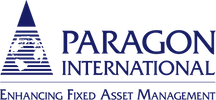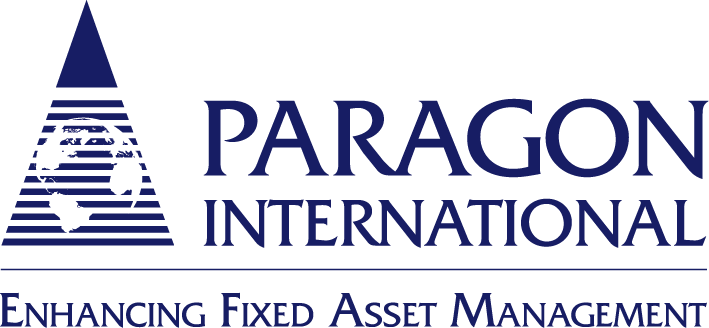Implementing a fixed asset inventory solution is vital for organizations for many reasons. A proper accounting of assets can save time and money, reduce theft, improve planning and budgeting, eliminate “ghost and zombie assets,” and help an organization recover after a natural disaster. Often times, however, the importance of fixed asset inventories is overlooked in an organization. Yet assets such as land, buildings, computers, furniture, fixtures, vehicles, machinery and equipment represent the largest investments most companies make.
Many companies are unsure of how or where to start in this process, and the challenge can be daunting. Establishing the highest standards of inventory accuracy and best practices in fixed asset management will pay off in savings and efficiency for:
- Corporate accountants managing fixed assets.
- CFOs striving to optimize business efficiencies and plan capital budgets.
- Government asset managers complying with Governmental Accounting Standards Board (GASB) 34/35 standards.
- Nonprofit executives seeking to gain maximum leverage from limited resources.
Why Fixed Asset Inventories Matter
Unfortunately, when it comes to the fixed asset inventory of your organization, what you don’t know could cost significant money, reduce efficiencies, and could even cause your organization to cease operation. All too often, organizations don’t pay attention to their fixed asset inventory. They don’t stop to think how much they are paying in insurance or property taxes on the assets the organization does or does not have, and are ill prepared in the event of a disaster.
To run a profitable business, management must have information regarding the current location, use, state of repair, and usefulness of its productive assets. The CFO has a fiduciary duty to ensure accurate systems are in place to provide this information. The only way an organization can accomplish this is to implement a best practices inventory process, document it, and continuously monitor and update as changes occur. Challenges to controlling fixed assets include the lack of accurate physical fixed asset inventories—and inadequate tools and resources for maintaining accurate inventories going forward. Implementing a detailed inventory process will enable organizations to:
- Save time and money.
- Reduce theft.
- Improve planning and budgeting.
- Eliminate “ghost assets.”
- Identify “zombie assets.”
- Recover in the event of a disaster.
Save Time and Money
By implementing a fixed asset inventory process that includes documenting, labeling, a fixed asset tracking software solution, and continual tracking, organizations can reduce the time it takes to evaluate the assets on hand—reducing costs and helping to achieve profitability. By properly tracking fixed assets and performing regular fixed asset inventories, organizations can ensure that it does not spend money on items it already has and reduce the costs of performing audits.
Reduce Theft
Employee theft is a serious problem in many organizations. A leading cause of business bankruptcies are due to employee theft. It is estimated that it takes approximately $20 in sales to offset every $1 lost to theft. A poorly managed fixed asset inventory makes it easier for opportunistic employees to take assets, especially those deemed “attractive,” such as computers and media equipment.
A fixed asset tracking system using secure barcode technology, combined with regular inventories, can reduce theft and save organizations substantial money. Up-to-date and accurate fixed asset inventories and accounting records make it easier to identify theft and enable prosecution and recovery.
Improve Planning and Budgeting
Having a good handle on your fixed assets – when it was purchased, where it is located and its useful life – you will have a clear picture of what may need to be replaced in the next fiscal year. This reduces overspending on duplicate assets already owned. Without an accurate inventory, capital budgets are incomplete because management is unaware of critical assets that need replacement. Performing regular fixed asset inventories are essential for effective planning and budgeting.
Identify “Zombie Assets”
A “zombie asset” is an asset owned by the organization that isn’t properly recorded on the fixed asset books. Examples are assets purchased and paid over multiple invoices, each below the capitalization minimum or assets purchased by employees and not properly identified on expense reimbursement reports. It is estimated that 10-15 percent of an organizations fixed assets are “zombie assets.” This results in assets not being depreciated or covered by property insurance. Properly identified, tracked and managed fixed assets can eliminate the needless purchase of duplicate assets, thus saving the organization money.
Eliminate “Ghost Assets”
A “ghost asset” is property that is lost, stolen, disposed or unusable but is still listed as an active fixed asset on the books. Fixed assets hold a large presence on corporate balance sheets and represent the bulk of investments for many companies. It is estimated that 15-30 percent of fixed assets on the books are “ghost assets.” This means that an organization could be overpaying taxes and insurance on those assets by up to 30 percent. This has a negative impact to the bottom line. According to the Association of International Certified Professional Accountants (AICPA), “ghost assets” can be a sign of fraud, opening up the organization to audits, liability and even criminal prosecution of individuals.
Large inaccuracies in fixed asset reporting jeopardizes the overall accuracy of corporate financials, posing a threat to executives responsible for ensuring regulatory compliance. Even mistakes in the amount of depreciation calculated can result in overpayment as insurance premiums are usually based on a percentage of the total current value of fixed assets. A detailed asset inventory process and regular performance of fixed asset inventories enables organizations to see an accurate return on investment and the impact on the bottom line. Use Paragon’s fixed assets savings calculator to see how much you can save by implementing a fixed assets tracking system. Enter your variables and get instant savings results.
Recover After a Disaster
Organizations don’t plan to fail, they fail to plan. Most don’t contemplate the consequences of a disaster, natural or man-made, striking their business. Unfortunately, many organizations do not have the adequate documentation that would allow them to recover from a disaster and are unable to justify replacement from their insurance companies or support from the government.
And sadly, according to the Federal Emergency Management Agency (FEMA), more than 40% of businesses remain shuttered after a disaster. For those that are able to reopen, only 29% were still operating after two years. By having an accurate inventory, and storing back-ups of fixed asset records off site, organizations can speed up the insurance claim process, enabling a quicker recovery can be up and running again quickly.
A Paragon client learned just how important an accurate fixed asset inventory is when disaster strikes. They implemented a fixed asset tracking solution and performed a physical inventory shortly before a hurricane struck their building. Their accurate up-to-date records helped them to quickly recover and resume operations. Read their story and watch this video to see how they did it.
A Sound Fixed Asset Inventory Process
It is important that fixed asset inventories be performed regularly to ensure the most accurate tracking of an organization’s assets. It prevents overpayment of property taxes and insurance, reduces the risk of regulatory noncompliance with legislation such as the Sarbanes-Oxley Act, facilitates GASB compliance, reduces theft, saves time and money, and helps companies improve planning and budgeting.
Performing an inventory only once a year is vital for the accounting records, but it does not allow an organization to prevent theft or maintain an accurate operating budget. By properly implementing a fixed asset inventory process coupled with fixed asset tracking software, organizations can minimize risk and maximize the return on their fixed asset investments.
Fixed Asset Inventory Next Steps
It’s clear that there are significant reasons for an organization to implement a fixed asset inventory solution. But where and how does one start this process? What is involved in implementing a fixed asset inventory process that will provide the benefits discussed here? Click here to learn how Paragon can help you go from “Oh, no!” to “Oh, yes!”
(Source: AICPA, FEMA, GASB, Sage)





